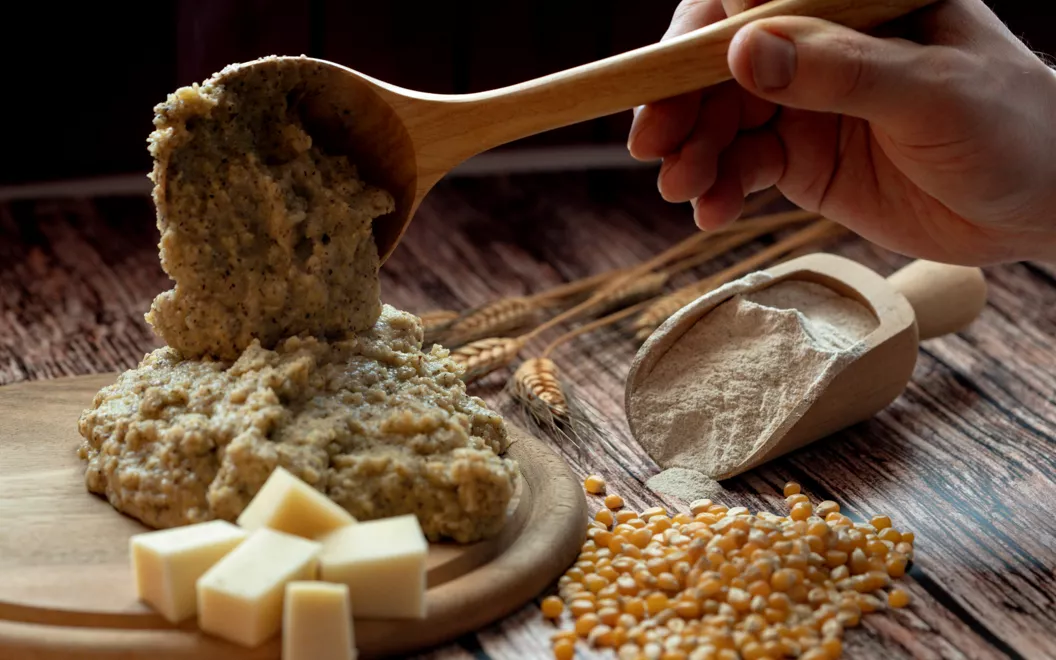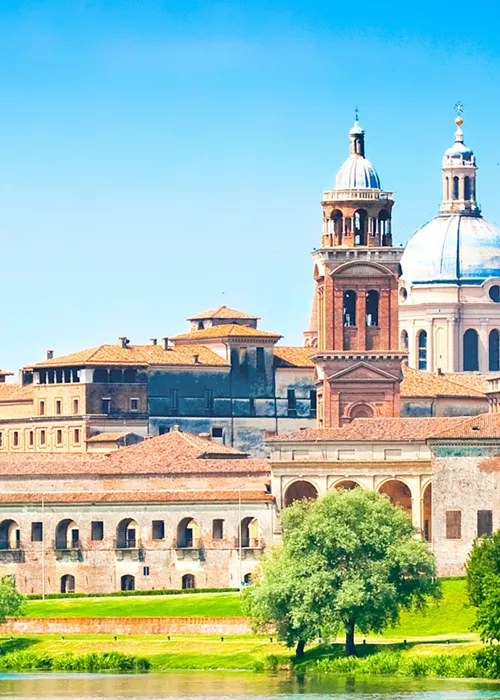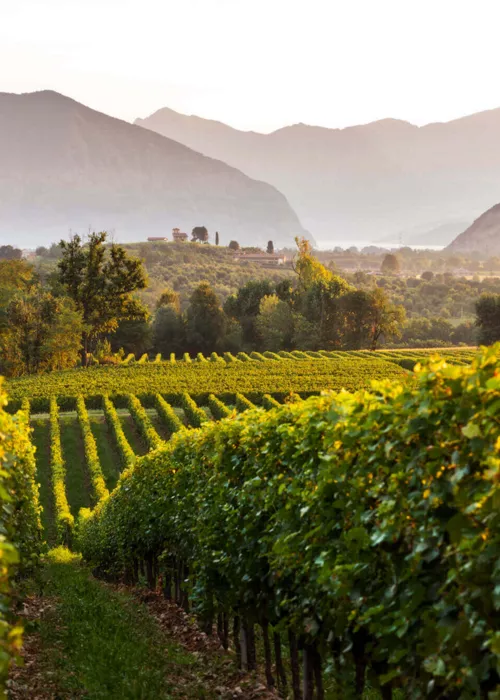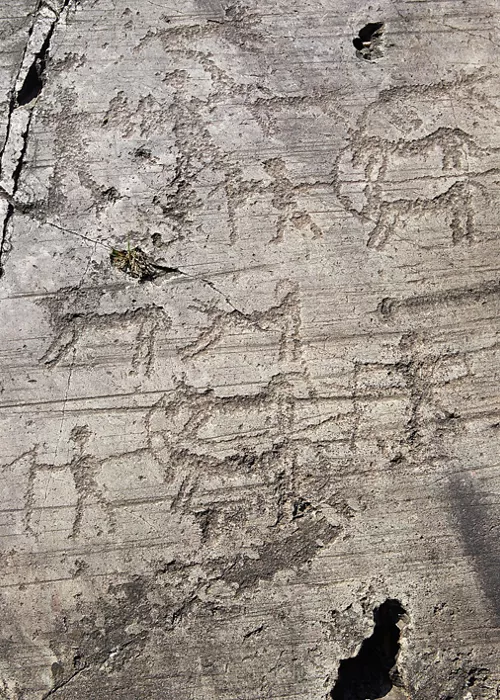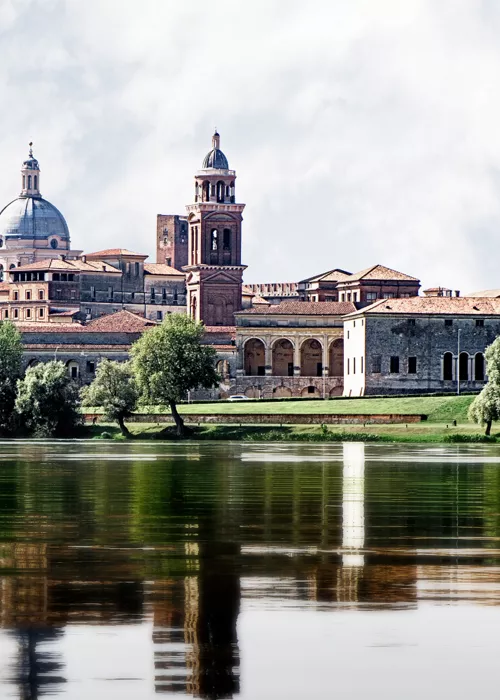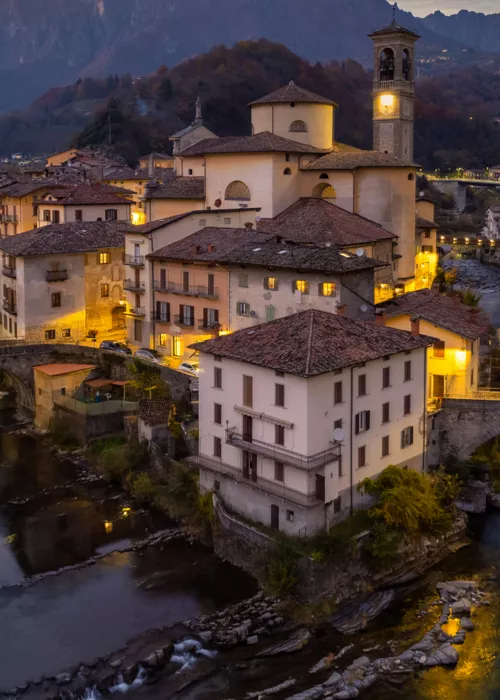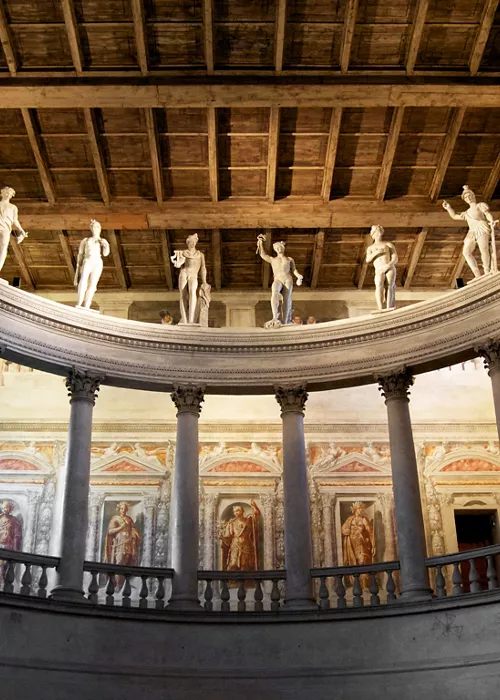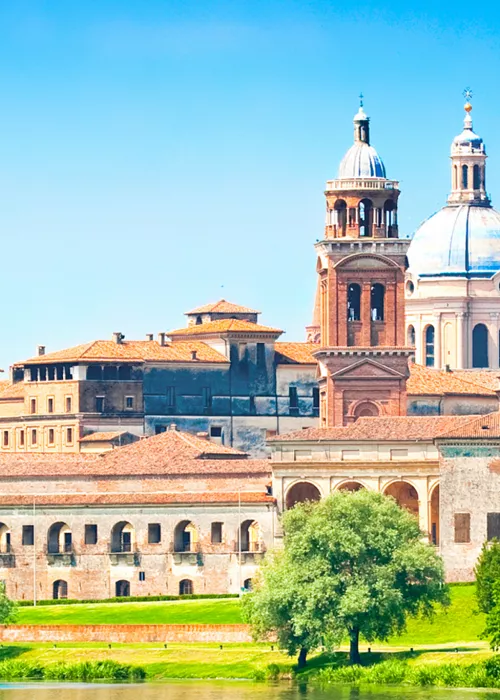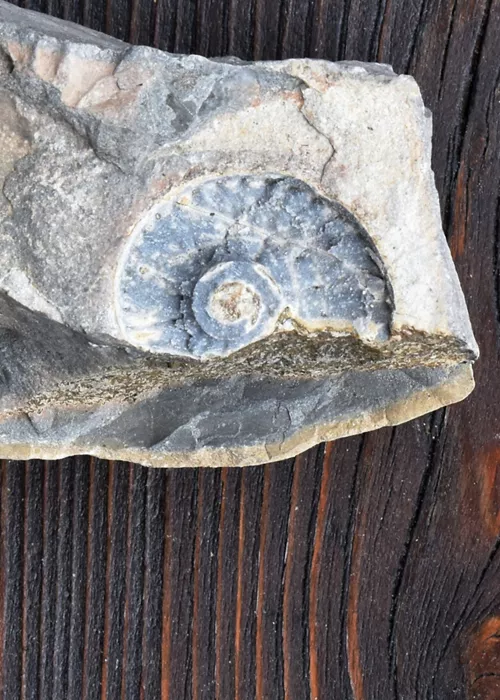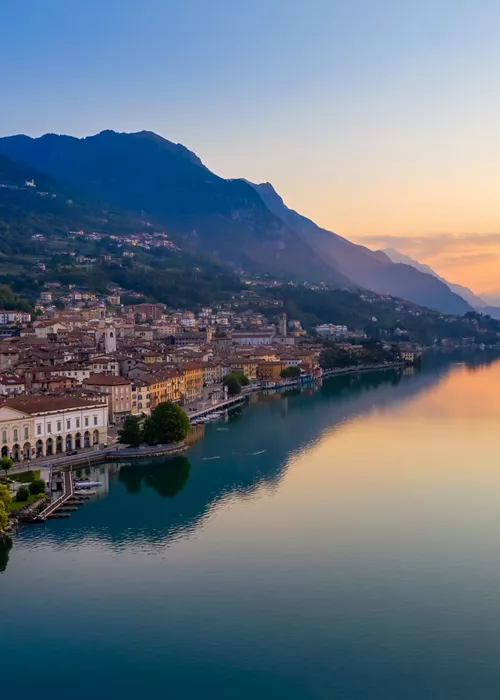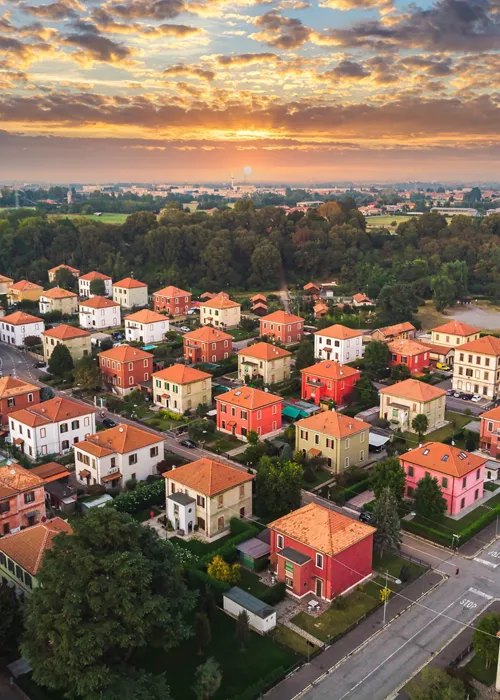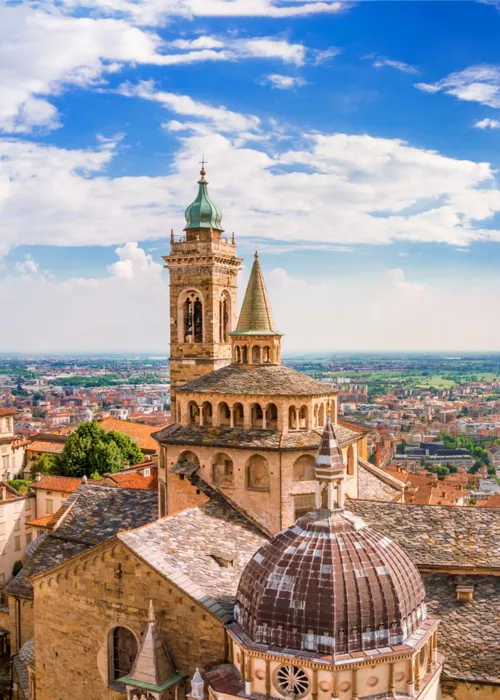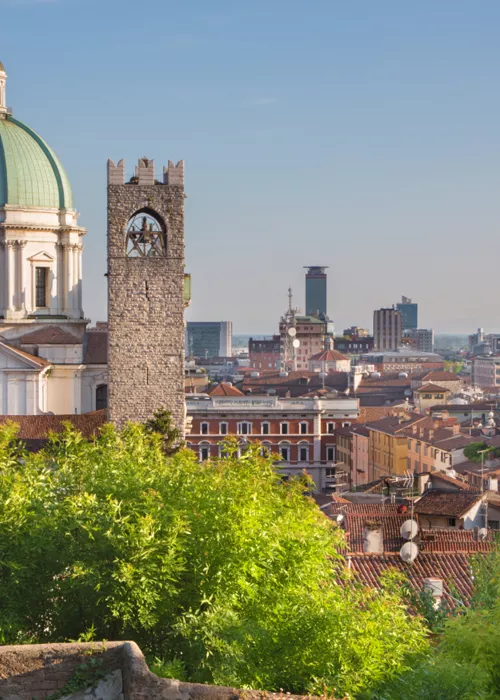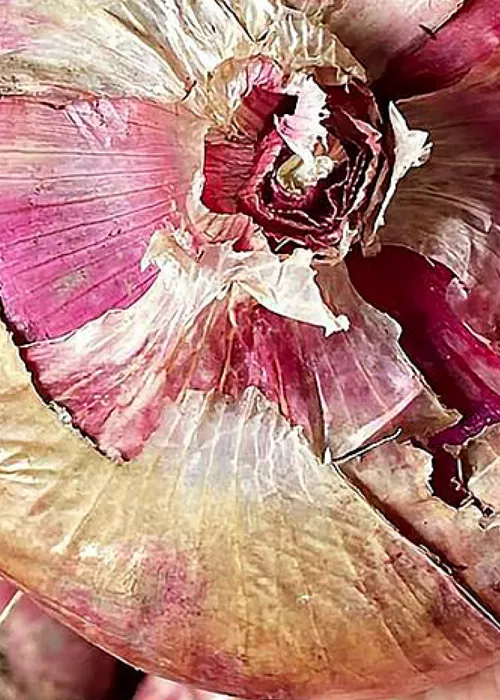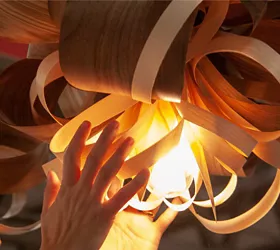Gastronomy in Lombardy: a multitude of souls for a riot of flavours
3 minutes

Index
The use of butter over oil, the variety of cheeses, the predominance of beef, the many soups based on potatoes (gnocchi), maize flour (polenta) and rice: these are the common characteristics of Lombardy cuisine, which is most fully expressed by the specialities of its provinces.
Milan plays on the field of cosmopolitan and popular cuisine, with traditional dishes, sometimes revisited, such as risotto, breaded cutlet, roasts, buseca (tripe and beans), cassoeula (cabbage and pork parts soup) and with His Majesty the Panettone. The roots of this dessert, which has become the symbol of Christmas in Italy, are controversial but there are no doubts about its tastiness, given not only by the ingredients but also by the patience and care in leavening it.
Gorgonzola, a small municipality in the Milan area, gave its name to the very popular blue cheese born in this area and protected by PDO for its geographic, production and gustatory peculiarities that have made it known worldwide.
In the Mantua area, typical products are the fruit of a thriving peasant culture: pork is the basis of many products, such as salami and salamella, the latter being the best condiment for risotto alla pilota, a local delicacy. Don't forget that the Mantua area is home to two great cheeses, the best known - and most imitated - in the world: Grana Padano and Parmigiano Reggiano.
In the Bergamo area, you will find delicacies such as cheeses (taleggio, quartirolo, strachitunt produced in the Brembana Valley, as well as gorgonzola), Bergamasque salami, lard, as well as polenta e osèi and casoncelli alla Bergamasca, created to use leftover meat.
In the Valtellina, do not shy away from Bresaola, Bitto cheese and pizzoccheri, accompanied by a full-bodied red wine such as Sforzato di Valtellina; in the Cremona area, enjoy Cremona salami and a plate of mixed boiled meats, and in the Brescia area, polenta with stewed pork rinds, snails and a slice of Bagòss, a typical local cheese.
A stop in the Larian kitchen, the realm of fish, in the Varese area, with a tasting of formaggella cheese from Luinese, and then a shower of rice from Lomellina and wine in the Oltrepò, in the province of Pavia, with pancetta, coppa and “Graton” (tasty cracklings).
Try the 'synthesis' dish: risotto with salami paste and Bonarda dell'Oltrepò Pavese, which, with Pinot nero, is the ambassador of the region.
Get on the road then, you will taste some more.
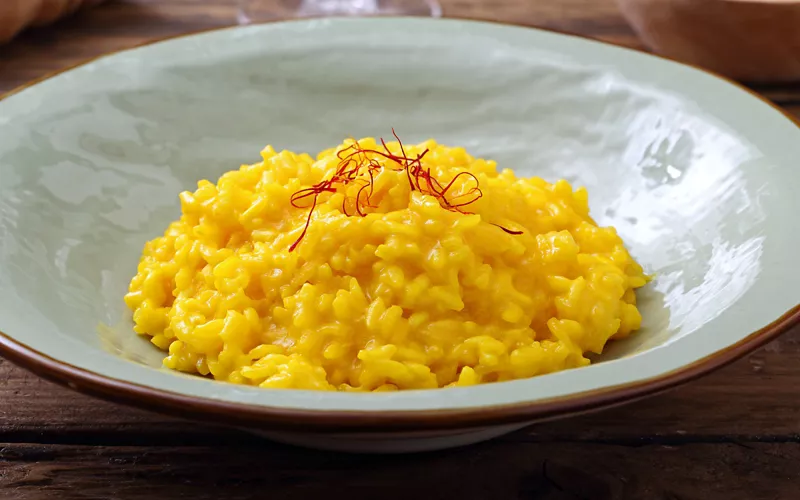
Tortelli di zucca, agnoli in brodo, risottos, stracotti, tagliatelle pie, typical cured meats, Parmigiano Reggiano and, of course, the white truffle. These are some of the surprising features of this stretch of the province of Mantua on the border with Emilia, cradle of the Tuber magnatum Pico.
A variety of truffle delicacies await you in the municipalities of Borgofranco sul Po, Carbonara sul Po, Poggio Rusco, Quistello, Sermide, San Giovanni dal Dosso, Felonica, Revere, Pieve di Coriano, Magnacavallo, Villa Poma, Quingentole and Schinevoglia.
In these delightful villages you can taste risottos, tagliatelle, eggs, escalopes, pumpkin tortelli, fondue and pike in sauce, all seasoned with the precious tuber.
In particular, in Carbonara Po, Sermide and Felonica, you will find the excellent straw-yellow onion, used in the preparation of sauces, savoury pies and mashed pies, like the tiròt di Felonica.
Do not neglect the liquid goodness of the territory, which here is concentrated in Lambrusco Mantovano, whose grape variety has a very ancient tradition, documented by Mantua's most famous citizen, the poet Virgil.
Leave a little room also for a typical Mantuan dessert: Torta sbrisolona, made with almonds and corn flour, to be eaten in pieces and not sliced: its name, in fact, derives from “sbrisa", which is the dialect word for crumb.
Typical dishes
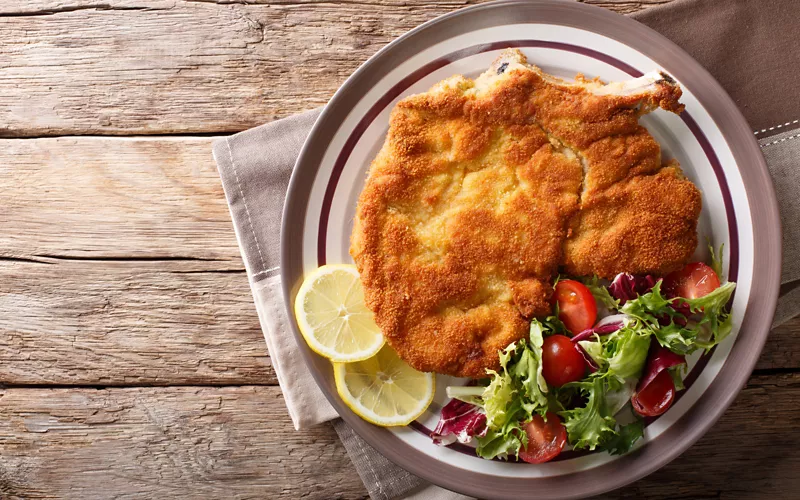
The pumpkin tortello
This is a traditional first course, which in the Mantuan tradition is cooked on Christmas Eve. Did you know that it was inherited from Renaissance princely cuisine?
Cotoletta alla Milanese
This is the best-known dish of the Lombard capital, alongside risotto alla Milanese and panettone. It belongs to the ancient Milanese tradition: the costoletta, already mentioned in a document from 1148, has always been one of the symbols of Milanese cuisine.

